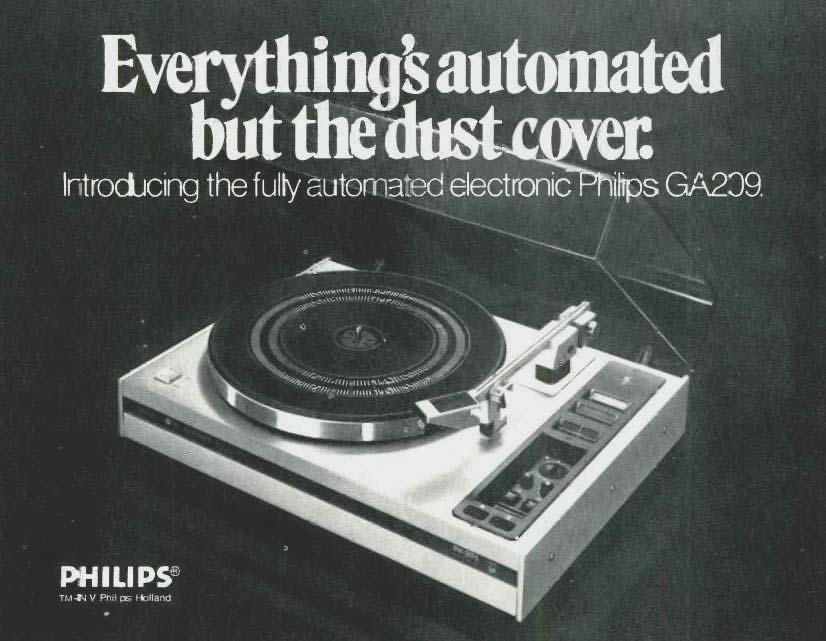
Put a record on and walk away.
The Philips 209 will automatically sense the disc size, select the speed, spin the platter and cue the tone arm electronically, all by itself.
Then, when the record is over, it will return the tone arm, and turn itself off. It's the only turntable that does it all.
But most important, there's virtually no detectable wow, flutter, drift or rumble. A well equipped research lab would have a tough time finding an echo of electronic noise.
The 209 is the only turntable with three DC motors. One cues the tonearm. The second transports the arm.
The third, a DC servo, spins the platter.
Separating the functions simplifies the operation of the turntable and eliminates noisemaking possibilities.
The DC servo motor's tacho generator registers and corrects any speed variation. Power fluctuations can't distract from your pleasure.
We eliminated virtually all detectable acoustic feedback and rumble by freely suspending the sub-chassis.
Our precision ground drive-belt also filters out any conceivable noise that could be-traced to the drive motor.
We minimized the 209's aluminum tone arm size to cut down mass related resonance. Tracking error is less than 0° 10’/cm. That means tracking error for your ears, does not exist. Friction, both vertically and horizontally is less than 10mg. The tonearm assembly in its rest position provides a continuous read-out styles force gauge.
Now we’re working on automating the dust over. Any ideas?
GA 209 Quality Specs:
Speeds: 33 1/3 & 45 rpm electronic/automatic selection
Speed calibration range: ± 3%
Wow and flutter: less than 0.08%(Typically 0.03%)
Rumble: -65 dB DIN 8 (ARLL)
Hydraulic Cueing: motor driven: touch control actuated
Anti-skating Compensation: For elliptical and spherical styli.
Drive system: Electronic, tacho control
DC servo motor and precision stabilized belt drive.
Low capacity cables for CD-4.
Manual override on all automatic operations.
Includes base, removable dust cover.
PHILIPS AUDIO/VIDEO SYSTEMS CORP. AUDIO DIVISION
(Source: Audio magazine, Apr. 1975)
Also see: Philips CD960 compact disc player (Nov. 1988)
Philips turntables (Aug. 1975)
= = = =